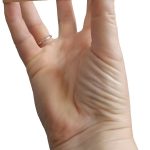The wrist & hand form a precision instrument allowing performance of highly skilled tasks with great power or pinpoint accuracy. Injury to the hand or wrist can deprive us from achieving the most simple of tasks.
Wrist pain or injury is common and can usually be successfully diagnosed and treated by your physiotherapist. Wrist pain can occur as a result of simply everyday arm use. In a world of computers your wrists are subjected to the horrible abuse of constant typing and mouse controlling. Your wrists also carry a lot of weight when performing upper body exercises, which is a lot of strain on otherwise a very fine structure.
Causes of wrist pain and injuries
Some of the common causes of wrist pain/injuries;
- Wrist tendonitis – is a relatively common overuse condition which may affect one or more wrist tendons and is characterised by tissue damage, pain and often swelling of the affected tendons.
- Carpal Tunnel Syndrome – presents with wrist and/or hand pain and pins and needle sensations. The Carpal Tunnel is a very small space between wrist bones, and the condition occurs when there is swelling in this area. A major change that happens during Carpal Tunnel is pressure change that is exacerbated by wrist movement, causing pain.
- Bone Fractures or dislocations and instability
- Capitate Fracture (Broken Wrist) – typically a consequence of a fall, the wrist is actually composed of eight small bones that can be broken. Typical symptoms include pain and tenderness towards the back of your wrist, movement in this direction will cause pain.
- Scaphoid Fracture (Broken Wrist) – A Scaphoid fracture is not unlike a Capitate break, and the two often occur together, the symptoms are similar, however in this instance pain is towards the direction of the thumb.
- Arthritis
- Muscle Strain
- Overuse Injuries
Wrist factures & physiotherapy
Wrist fractures are extremely painful, and it is absolutely vital that full functionality is restored after treatment. After the initial treatment of placing the wrist in a cast, regular appointments with a physiotherapist will be arranged to follow a regime of exercises. Cold therapy will be applied to reduce residual swelling, and a wrist support worn, at least initially, to reduce the risk of further injury.
Wrist physiotherapy treatments
An accurate diagnosis is vital to the correct management of your wrist pain/injury.
A physiotherapist has a number of techniques meant to facilitate the recovery of hand strength and dexterity. Therapeutic putty is a malleable substance which you can be asked to work in specific exercises to improve your dexterity and fine muscle control. Therapy balls can be used to relieve stiffness in the wrist; these are compactable balls that you squeeze. Similarly hand and grip strength are worked through resistance training, gradually increasing said resistance as the hand recovers. These techniques are all used in treatment for Carpal Tunnel as well, and form the basis for physiotherapy of the wrist.
Your physiotherapist may use hands-on techniques such as:
- Joint mobilisation
- Joint manipulation
- Physiotherapy Instrument Mobilisation (PIM)
- Minimal Energy Techniques (METs)
- Muscle stretching
- Massage and soft tissue techniques
- Tapping
- Dry needling
With accurate assessment and early treatment, most wrist pain responds extremely quickly to physiotherapy allowing you to quickly resume pain-free and normal activities of daily living.
Stretch of the Month
Finger Stretch
Rubber band exercises are a great way for strengthening the finger extensors muscles;
- Place a rubber band around your fingers and thumb.
- Gently spreads your fingers apart as far as possible.
- Relax your fingers, then repeat 10 times.
- This can be done on all fingers at once, or between two individual fingers.
Towards Wellness
Smile
Laughter is indeed the best medicine. It can relieve stress, boost your immune function, ease pain, burn calories, and improve your mood. To bring more laughter in your life, indulge in funny activities such as watching funny movies, being with funny people, and spend time with kids!

